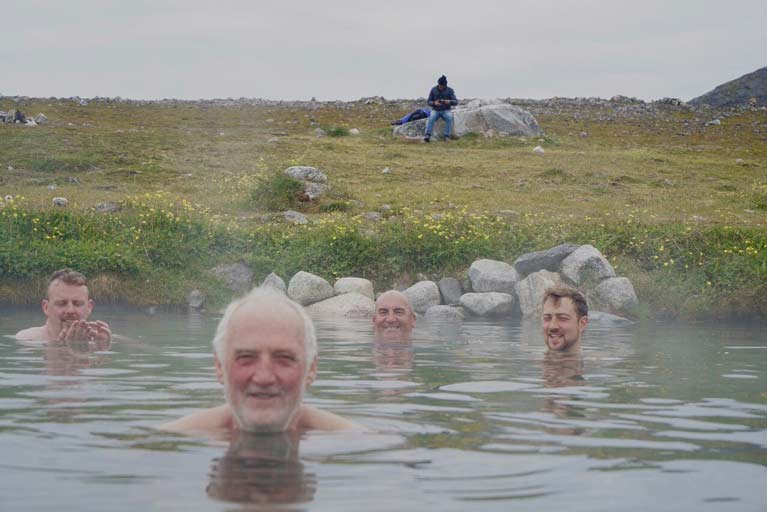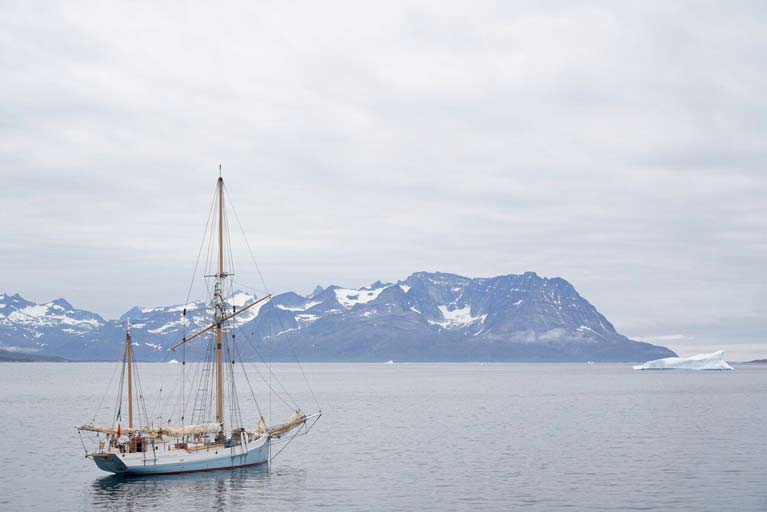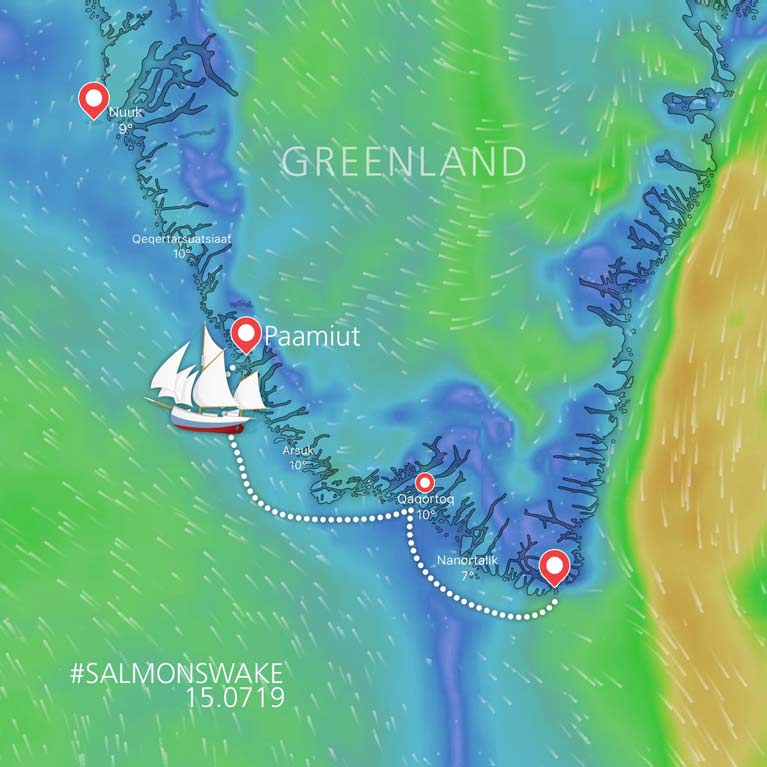The restored 1926 Limerick trading ketch Ilen continues to make steady progress on her Salmons Wake voyage to the Arctic writes W M Nixon.
She is now port-hopping along the southwest coast of Greenland towards Nuuk, with the rough conditions experienced for thirty hours in rounding Cape Farewell last Wednesday increasingly just a part of the many and varied experiences being recalled.
A Greenland landfall pic.twitter.com/iVK4Zf5qKP
— Ilen Project (@ilenproject) July 13, 2019
Nevertheless, it was a severe test of ship and crew, and Project Leader Gary Mac Mahon wrote:
“The good ship Ilen made a swift westward passage across the magnificent North Atlantic, arriving in fine shape on Southern Greenland. Crucially, a small sailing vessel approaching this region must have in place a flexible if age-old navigational strategy for a purposeful rounding of the great Cape Farwell.
Although thought of as Greenland’s most southerly point, the Cape is actually the majestic south headland of Egger Island, which in turn is the southern island in the Nunap Isua Archipelago. It’s a very windy and watery world which throws up prodigious seas far out to sea - up to seventy nautical miles offshore on all sides of this vast and icy south-projecting Atlantic cape. Bergs and bergy bits are also a sea phenomenon for navigational consideration and pilotage.
 While Ilen’s crew were enduring the rough conditions off Cape Farewell, the thought of a relaxing swim and bath in natural hot springs pools on the island of Unartoq was way beyond their dreams. Yet a couple of days later, it came to pass……renowned musician Brendan Begley is lead swimmer.
While Ilen’s crew were enduring the rough conditions off Cape Farewell, the thought of a relaxing swim and bath in natural hot springs pools on the island of Unartoq was way beyond their dreams. Yet a couple of days later, it came to pass……renowned musician Brendan Begley is lead swimmer.
The confluence of these elemental forces and topographical features makes for a demanding dual process of navigation and seamanship, a high-latitude cape-rounding process which can be expected to extend for up to two long days and nights.
How it unfolded for the Ilen was quite challenging, finding ourselves amid the seas and winds we had hoped to have had the good fortune to avoid. But an expected easing of conditions had not materialised. Yet such is ocean sailing, and one must be prepared - at many levels - for these seaborn happenstance.
The Ilen and her crew held together nicely, and some mid-gale thoughts of heaving-to for sleep and hot food were eventually to subside in balance with the rising confidence with ship and crew. What’s not good with a life on dry biscuits for a days or two…..?.
Not a little of prayer was heard in the dark gale mumblings of Ilen’s crew on that memorable Cape rounding – the most vivid experience so far registered on this Educational Voyage of extraordinary memories and keen anticipation”.
 New places call – Ilen ready to depart off Nanortalik, where she was first welcomed to Greenland.
New places call – Ilen ready to depart off Nanortalik, where she was first welcomed to Greenland.
With the business of getting Cape Farewell put safely astern, Ilen and her crew have since been getting to know this vast island of Greenland and its isolated but vibrant little communities, making Nanortalik their first port of call.
In their coast passage-making northward, they have found time to visit remote anchorages on a majestic scale under snow-capped mountains, while a call to the island of Unartoq rewarded the crew with a welcome swim in natural hot spring water,
At the little settlement of Qaqortaq they found it was Festival Day for the local kayaks, deceptively basic craft of an ancient yet sophisticated type which, in skilled hands, can endure a remarkable variety of conditions at sea while the task of fishing continues.
Local kayaking races at Qaqortaq today - magnificent demonstration of skill and speed with these elegant frail skin craft. pic.twitter.com/r4S2HUerAf
— Ilen Project (@ilenproject) July 13, 2019
As for Ilen herself, progress continues to be good, and she has now reached Paamiut, halfway between Cape Farewell and Nuuk.
 Ilen has now reached Paamiut, halfway from Cape Farewell to Nuuk
Ilen has now reached Paamiut, halfway from Cape Farewell to Nuuk  Solitary splendour. At a time when Dublin Bay was packed with boats in the Dun Laoghaire Regatta, Ilen had this vast bay in southwest Greenland entirely to herself. Photo: Gary Mac Mahon
Solitary splendour. At a time when Dublin Bay was packed with boats in the Dun Laoghaire Regatta, Ilen had this vast bay in southwest Greenland entirely to herself. Photo: Gary Mac Mahon


























































